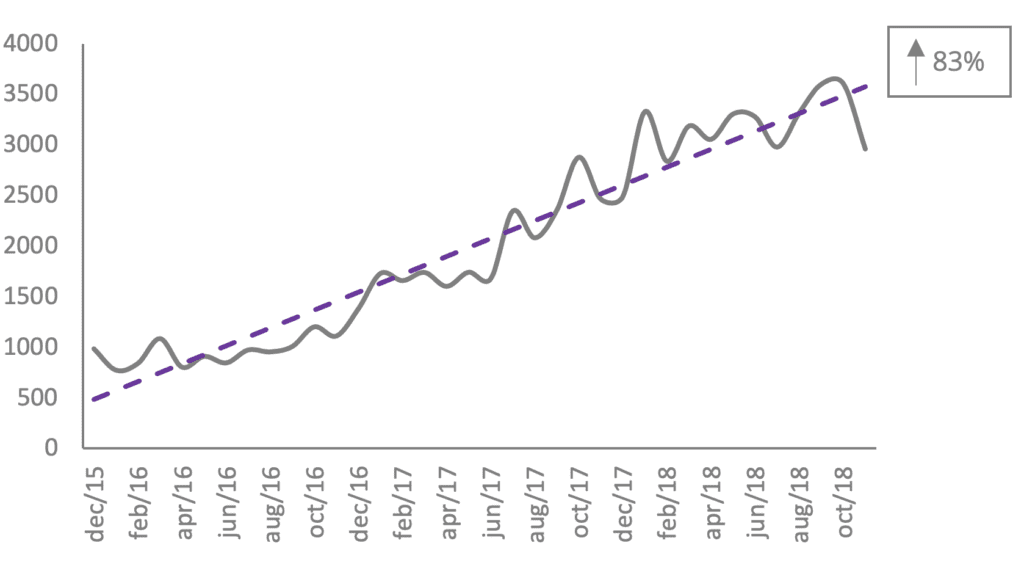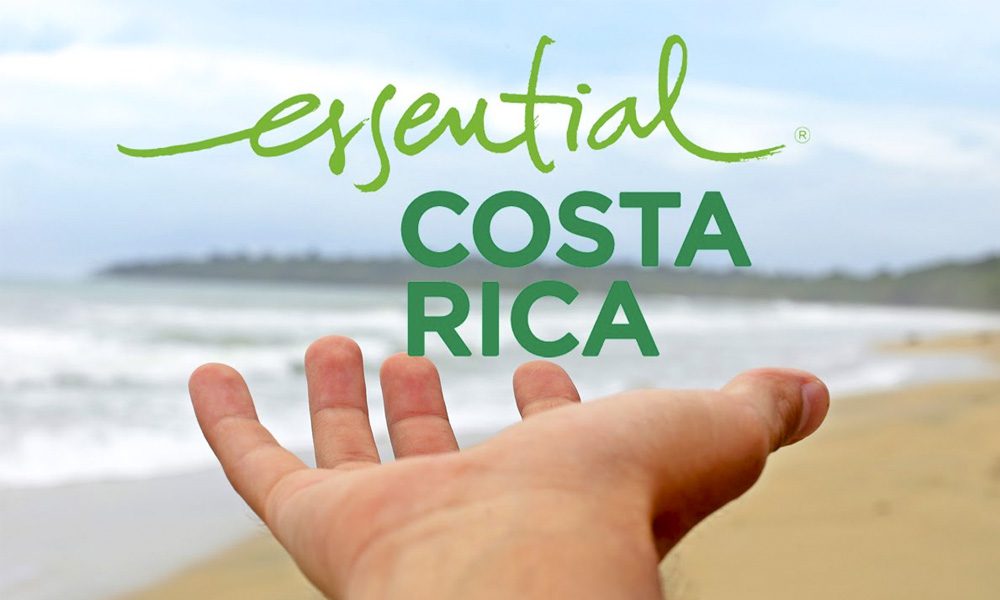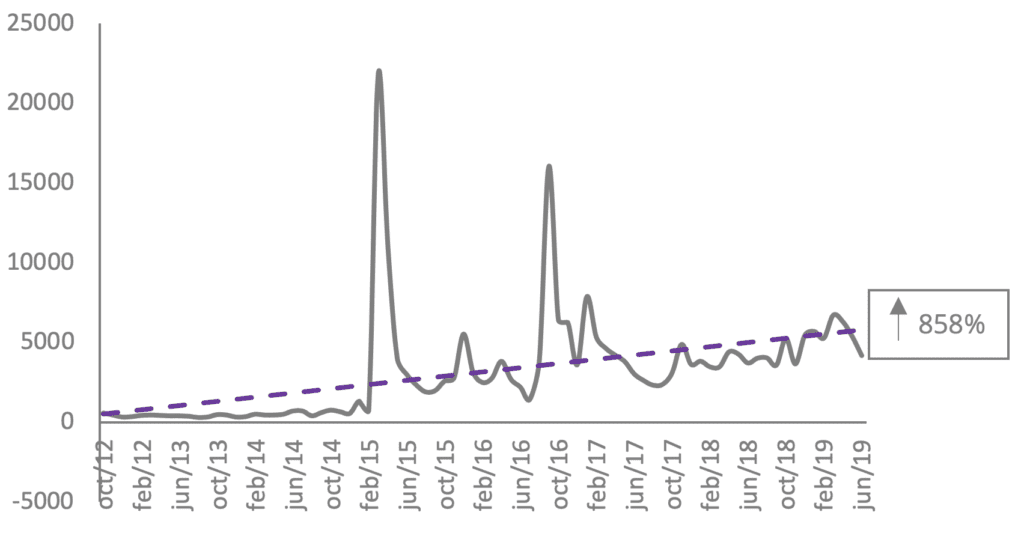Estonia and Costa Rica have learned how to turn Nation and Place Branding theory into practice. They did so through the evolution of their strategies and reputation on the world stage, positive proof of the opportunities for nations to change, and build brand perceptions in a proactive way.
These Countries are different for obvious reasons (location to language, history to culture, and differing social and economic conditions). Each Country has a different story to tell and its own path to follow with a unique identity to reach a specific audience and achieve the goals set for the identified needs.
But the cases of Estonia and Costa Rica have more things in common than what distinguishes them. They both have the foundation for a successful Nation Brand.
FOUR ESSENTIAL ELEMENTS OF A SUCCESSFUL NATION BRANDING STRATEGY
1. A brand strategy based on a Central Idea
First and foremost, the two Countries wanted to manage their reputation and establish a specific perception. Estonia wanted to be perceived as a digital society, while Costa Rica a global role model.
This Central Idea provides the foundation for a coherent, consistent and realistic strategy capable of structuring the entire brand. All actions, activities, measures, and policies are aligned with this concept, making it possible to change perceptions and manage their reputation.
2. The right organisational structure
Estonia has Enterprise Estonia and Costa Rica has Esential Costa Rica. Both are organisational structures made from scratch with the sole purpose of managing the Nation Brand. They are comprised of official, resilient, non-partisan, and independent teams capable of surviving political and governmental changes. They do so while keeping the strategy working in collaboration with key stakeholders and all entities involved.
3. Clear KPIs and measurement processes
The two Nations have been monitoring the Country Brand’s actions and policies while measuring the results. This process directly impats theis strategy’s success. If we don’t measure it, we won’t know if it works. Estonia and Costa Rica have specific Nation Brand tools that ensure key indicators and measure the relevance of the strategy in terms of meeting specified goals.
4. Management of Digital Identity
Finally, these two Nations were able to identify an extremely important factor. Given the influence and impact it can have on the remaining components of a Country Brand, its Digital Identity. They have demonstrated their understanding that the offline and online world are intrinsically linked and influence each other. I have looked in more depth at the importance of the Digital Identity of Nation and Place Brands in my recent book “Nation Brand Builders”, where I address Nation Branding 2.0.
Let’s take a closer look at these two case studies examples that prove Nation and Place Branding strategies work.
ESTONIA: The most Digital Country in the World

Following their restored independence in 1991, Estonia has come a long way to find its place on European and world map. This Baltic Country in Northern Europe, with half of its territory “occupied” by forests and wilderness, has worked hard to build its economy and position itself as an innovative and technological Country.
With a clear vision of the future as a digital society, Estonia invested heavily in digital infrastructure, becoming the first e-State. They did so by creating digital solutions to make life easier for their citizens with the e-Estonia programme. This means that 99% of public services are digitally managed and accessible online, cutting red tape in state processes. This is when the brand strategy began.
Creating Enterprise Estonia
The government’s continued commitment to digital initiatives ensured that Estonia began to be perceived as the world’s most advanced digital society. Established in 2000, Enterprise Estonia was created as the institution that prepared the strategic objectives of the Estonian Nation Brand in terms of providing financing and training to encourage entrepreneurship.
Capitalising on the Country’s growing reputation for digital expertise, Enterprise Estonia introduced the e-Residency programme in 2014. Its purpose was to grow Estonia’s community and economy by inviting foreign citizens to open businesses in Estonia. The transnational Digital Identity they pioneered is available to anyone in the world interested in running an online business. This enables Estonia to stand out clearly in the international arena, generating more domestic revenue exclusively through digital companies. This is critical for a Country of only 1.3 million inhabitants.
In fact, the Republic of Estonia has become the ideal place for remote digital nomads and international entrepreneurs planning to host a company in the European Union.They do so by ensuring these digital services convey security, credibility and trust. Estonia has succeeded in creating new opportunities across borders.
Real world impacts
All these policies are examples of how measures driven by a Central Idea can become extremely visible and tangible. Estonia is also the benchmark for a Country that promotes its Digital Identity, by investing in their digital presence early on. If you try searching “Estonia” in a search engine, everything that appears reflects its Central Idea. The digital perception of the Country reflects its intended one and this perception corresponds to what is relevant in the real world.
This consistent implementation of the Central Idea of Estonia’s Nation Brand has resulted in changing and building the right reputation among internal and external audiences. And this is evident in Estonia’s performance in various international rankings.
According to the 2019 edition of the European Commission’s Digital Economy and Society Index (DESI), which monitors progress made by EU Countries in terms of digitalisation, Estonia ranks 8th among the 28 Member States. It is one of the European leaders when it comes to digital public services. In addition, it is the best rated Country in the 2018 Digital Life Abroad, given the availability of online administrative and government services. It also ranks high on the 2018 Internet Freedom House Index.
Often ranked as one of the most competitive, open, and transparent economies in the world (ranked 7th in the 2018 Heritage Foundation’s Index of Economic Freedom), its simple and agile business environment is one of its main drivers.
Proofs that it works
A further indicator that Estonia’s Nation Brand strategy is working – and that all of the policies adopted along with it are having a real impact on public perception – is the result in digital searches.
As a performance metric for Nation and Place Brands, online searches show how a Country, Region or City is doing in terms of appeal and how much proactive interest is generated in the desired international audiences. The more a Country, Region or City is searched for the right reasons, the more interesting it is for its audience. Online searches are a true indicator of how a place is perceived by international stakeholders. What people search about a place is what they associate with it. In other words, if a Country, Region or City is digitally searched with positive keywords, it has a strong and relevant brand.
In order to assess and analyse the digital performance of Estonia, we used the Digital Demand – D2© software. This intelligence tool allows us to understand the appeal of Nation and Place Brands, while providing us with an overview of the most searched topics (or brandtags, as we call it) in five different dimensions: Talent, Tourism, Exports, Investment, and Prominence.
Entrepreneurship and Talent Attraction in Estonia
In the last three years, Estonia has become the fastest growing Country in Europe for searches related with “Entrepreneurship”, a brandtag clearly linked to Estonia’s Central Idea. With an average growth of 83% in Digital Demand – D2©, Estonia’s growth is ten times higher than the world´s average growth (8.7%).
Graph 1. Global Searches for Estonia – Digital Demand – D2©

December 2015 – October 2018
Estonia is also one of the fastest growing European Countries in terms of attracting Talent, another topic that is directly associated with the Central Idea. It has implemented programmes like e-Residency and other policies that aligned with the Country’s Central Idea (2016-2018). Estonia is the Country Brand with the third largest growth rate in terms of “Work” brandtag searches in Europe on our software, Digital Demand – D2©. The strategy has succeeded in aligning the Central Idea and reality of the Country Brand with international perceptions.
Estonia is not only the number one in Europe for average growth in entrepreneurship searches, but number seven in the world. The Country is ahead of others like Hong Kong, Chile, and United Kingdom.
Table 1. World Ranking for “Entrepreneurship” – Digital Demand – D2©
Global searches (2018)
| Rank | Country |
| 1 | Canada |
| 2 | China |
| 3 | Singapore |
| 4 | India |
| 5 | Japan |
| 6 | Israel |
| 7 | Estonia |
| 8 | Hong Kong |
| 9 | Chile |
| 10 | United Kingdom |
COSTA RICA: Much more than Nature

World renowned for its fauna and flora, Costa Rica is an oasis in the heart of the American continent. Surrounded by the Caribbean Sea and the Pacific Ocean, 25% of its territory is covered by parks, natural reserves, and wildlife refuges. It contains 5% of global biodiversity, with around 750,000 different species of insects and plants.
The intrinsic link with nature is, in fact, one of the strongest aspects in Costa Rica’s image. With the development of the Country Brand strategy, this Central American Country showed that it is much more than that.
Initially, every effort was made to make Costa Rica a tourist destination. However, using the structure of a Nation Brand strategy, it was possible to create a broader approach that included talent attraction, promotion of exports, and improvement of general reputation in order to establish the Country’s distinguished features and competitive advantages at a global level.
Managing a complete and independent Country Brand
An independent committee of state governments has been set up, responsible for the management of the Essential Costa Rica Country Brand. Its tasks include collaboration and involvement of public and private stakeholders as well as the citizens themselves. This organisation is autonomous from its executive governments and guarantees a non-partisan position. Although it operates in natural articulation with the administrations in office, it is exempt from political results.
The commitment of tourism policies to the environment contributed positively to the perception of Costa Rica. They did so with other key policies such as the promotion of education (i.e. literacy rate is 96%), culture (i.e. all children are encouraged to learn how to play an instrument), peace (i.e. headquarters of the United Nations’ University for Peace), access to the health system (i.e. free national service), and the development of industries (i.e. export of technology and food products to 157 Countries).
Sustainability at the heart of the Costa Rican Place Brand
In addition to being one of the most stable democracies in Latin America, Costa Rica is one of the few Countries in the world without an army. They abolished the armed forces over 70 years ago to allocate their budget to education and culture. Costa Rica’s concern for their population’s well-being and quality of life contributes to the reasons it is a key member of the Wellbeing Alliance. Notably, they are considered to be the happiest (2019 Happy Planet Index).
Thanks to the reinterpretation of the pre-existing values of sustainability, excellence, innovation, social progress, and pride in Costa Rica’s origins, our team at Bloom Consulting reaffirmed the strategy and established a management model for the Nation’s Brand. This model allowed the alignment of all actions, measures, and policies with the Central Idea.
Its role in protecting nature and efforts to combat climate change are reflected in the government’s ambitious policies aimed at green energy. Currently, 99% of electricity is generated by renewable energies and Costa Rica wants to become the first Country free of plastic and carbon in 2021. They want to do so while achieving zero emissions by 2050. These ambitions sustain Costa Rica’s Country Brand as a global “role model”.
Proofs that it works
The performance of Costa Rica’s Country Brand has been growing and proving how Nation Branding works effectively when it is well structured and implemented properly.
In November 2019, the Essential Costa Rica Country Brand received the Place Brand of the Year award at the City Nation Place Global event in London, “for its commitment to a sustainable and multifaceted strategy and its belief in the potential for the Place Brand to unite an entire nation”. This value recognition in preservation, sustainability, and inclusion of citizens serves as an example for other Country Brands.
Added to that, the evolution of Costa Rica through the annual editions of the Bloom Consulting Country Brand Ranking©, is remarkable! Since 2013, in Tourism, it has jumped from 11th to 5th regional position. This meteoric rise is a positive outcome of increased tourism revenues, online performance and strategy efficiency. It has also secured its place in the World Top 30 – an extraordinary achievement for a Country of its size.
In the Trade dimension of the same ranking, it provides living proof that sustainability can be the engine of its economy and establish a financial return. It currently ranks 10th in the American ranking. The latest Digital Country Index© also puts Costa Rica on the verge of the top 50 most sought-after Countries by export and the top 30 by talent (living, working, studying).
But the most important metric of how Costa Rica’s Country Brand strategy is having a legacy effect is the skyrocketing searches after the implementation of its renewable energy policies. The average growth in the last two years jumped 858%! As you can see in the graph below, after November 2014, the period of the implementation – the number of searches for “Renewable Energy” reached an unprecedented peak. A strong indicator that Costa Rica’s Nation Brand strategy put the Country on the “green” map.
Graph 2. Global Searches for Costa Rica – Digital Demand – D2©

October 2012-June 2019
With this type of improvement, it is not surprising that Costa Rica belongs to the Top 10 most searched online Countries worldwide for “Renewable Energy”. Environmental sustainability is at the core of Costa Rica’s Country Brand. It’s clear that the strategy’s implementation is building a positive reputation and aligning perceptions with its Central Idea.
Table 2. World Ranking for “Renewable Energy” – Digital Demand – D2©
Global searches (2018)
| Rank | Country |
| 1 | China |
| 2 | Germany |
| 3 | India |
| 4 | Iceland |
| 5 | Mexico |
| 6 | Spain |
| 7 | Australia |
| 8 | United States |
| 9 | Costa Rica |
| 10 | Japan |
Demonstrating Nation Branding
There are many Country-marketing campaigns that can demonstrate ROI for attracting tourism or attracting investment. However, this is different, it is Nation Branding. What connects these two Nation Branding case studies is the breadth and impact in shifting perceptions that results from having a Central Idea, the right organisational structure to provide consistent support to the brand strategy, clear KPIs and measurement processes, and an understanding of the power of digital reputation.
This article was originally posted on the City Nation Place website.
Published on 19.03.2021.











